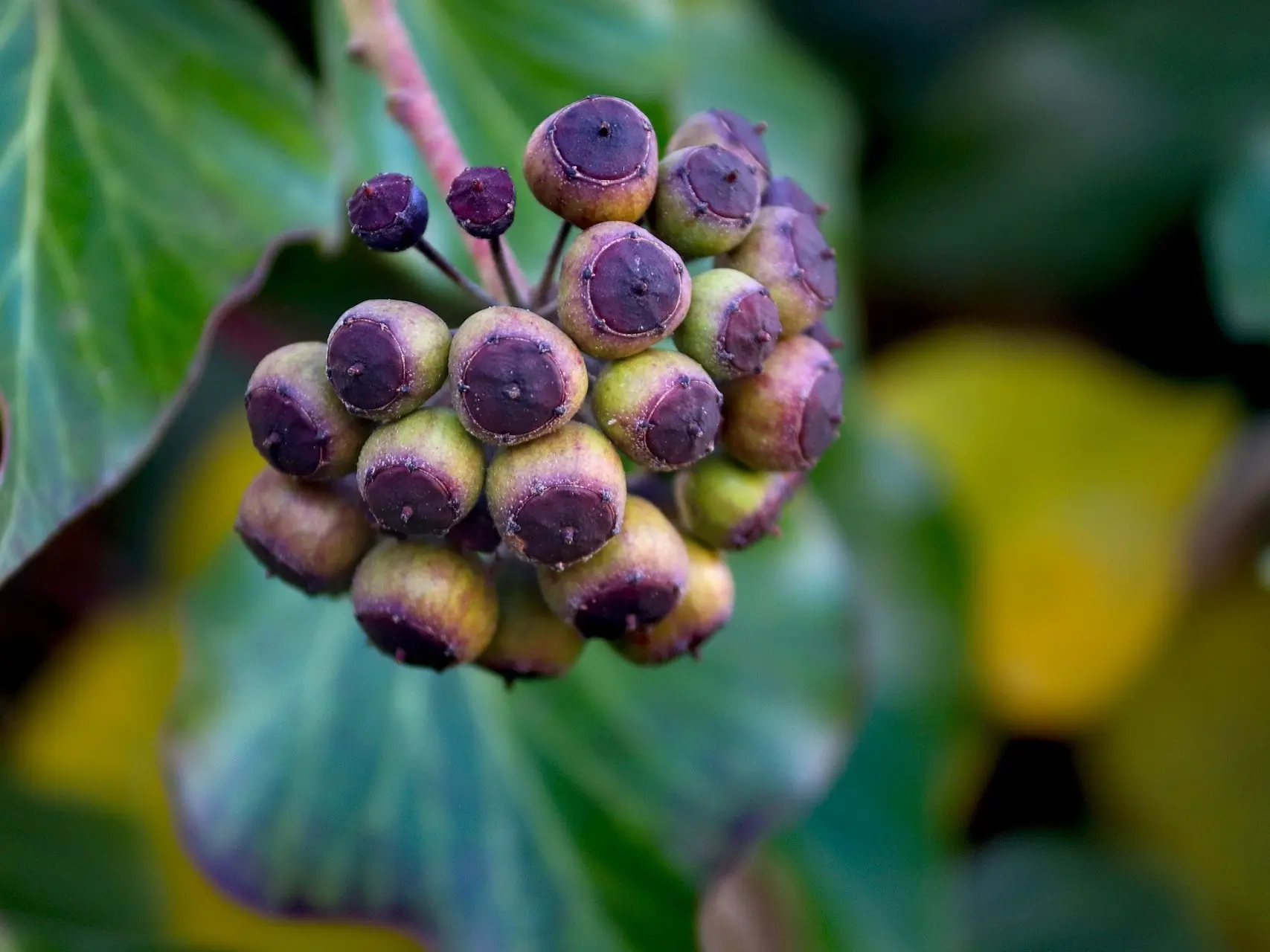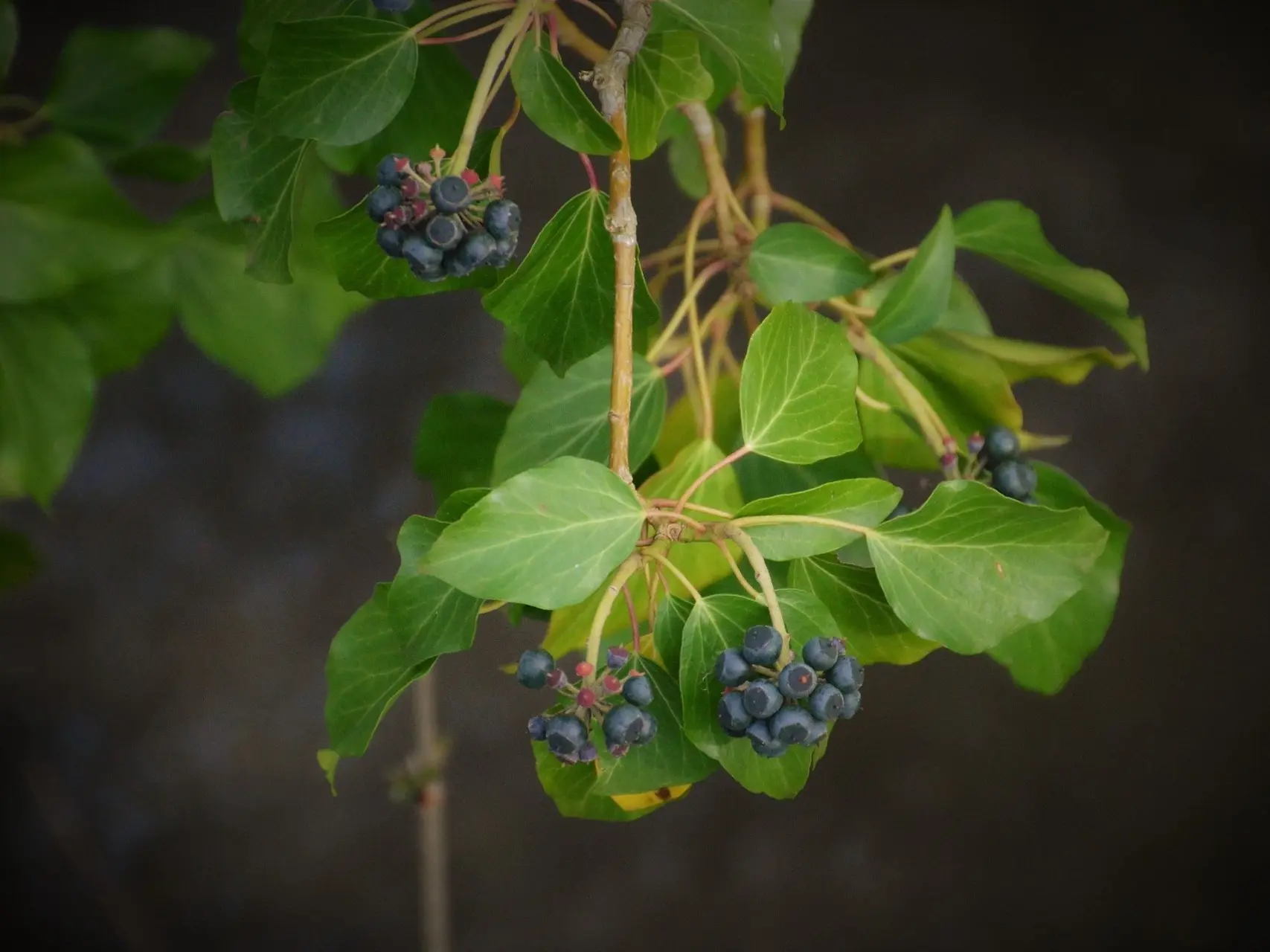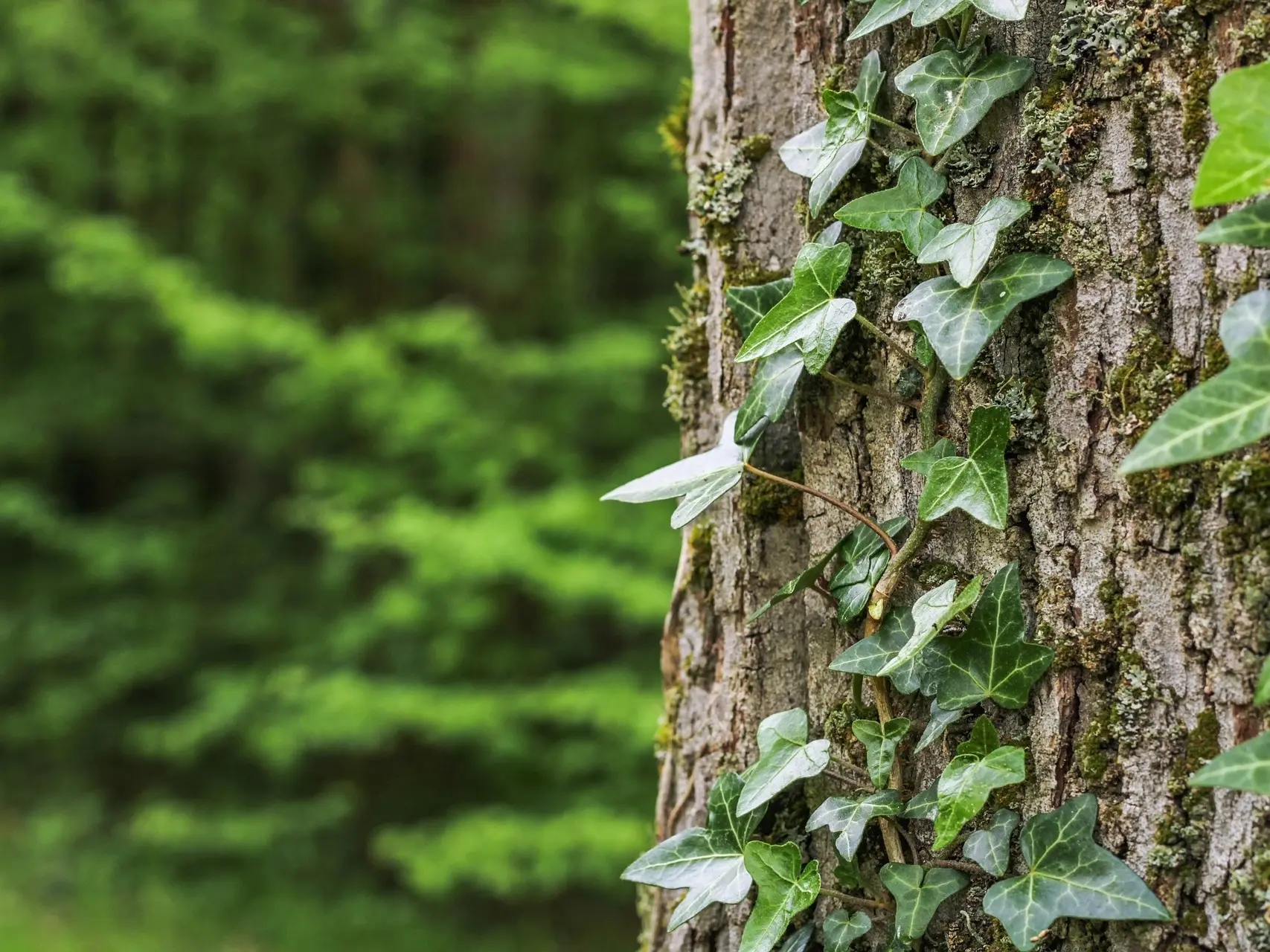
Names
Hedera helix, Weber’s Californian, English Ivy, Glacier Ivy, Needlepoint Ivy, California Ivy
Description
Evergreen, climbing vine with alternate leaves. The leaves are lobed and often variegated. Flowers are small and green / yellow with five petals. Fruit is fleshy and black.

Concern Level
: Only during drought conditions, unpalatable.
Toxic Parts
All parts of the plant are toxic

Symptoms
Colic, diarrhea, hyperactivity, excessive salivation, fever, weakness, irritation of skin around mouth.
Danger
Toxic in large quantities and can cause severe skin irritation with contact. Contains triterpenoid saponins and polyacetylene compounds.

More Information
*It should be noted that we are not veterinarians. This information is written specifically for horses and should be used for reference purposes only. If you think your horse has eaten something toxic call your vet right away.